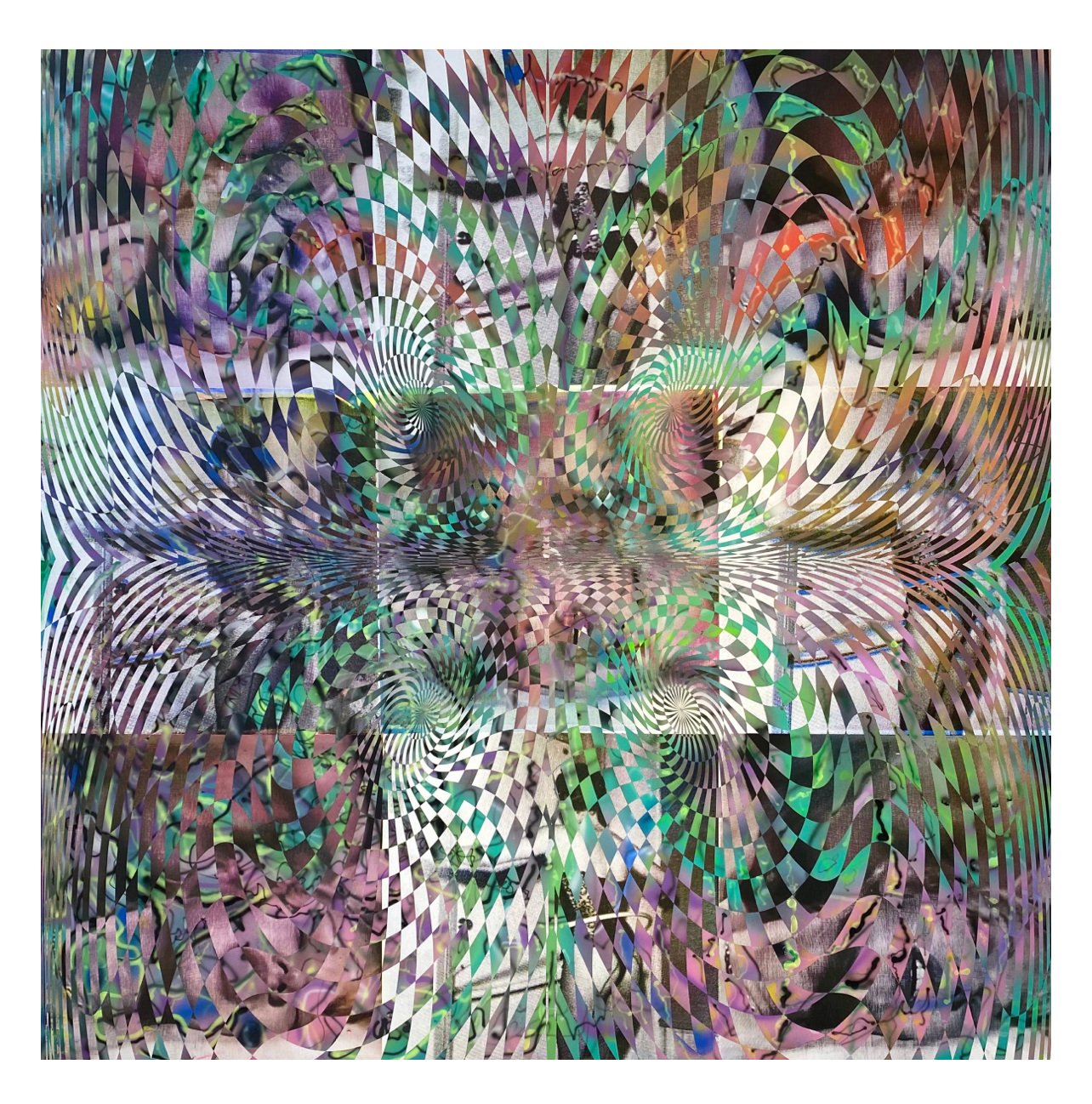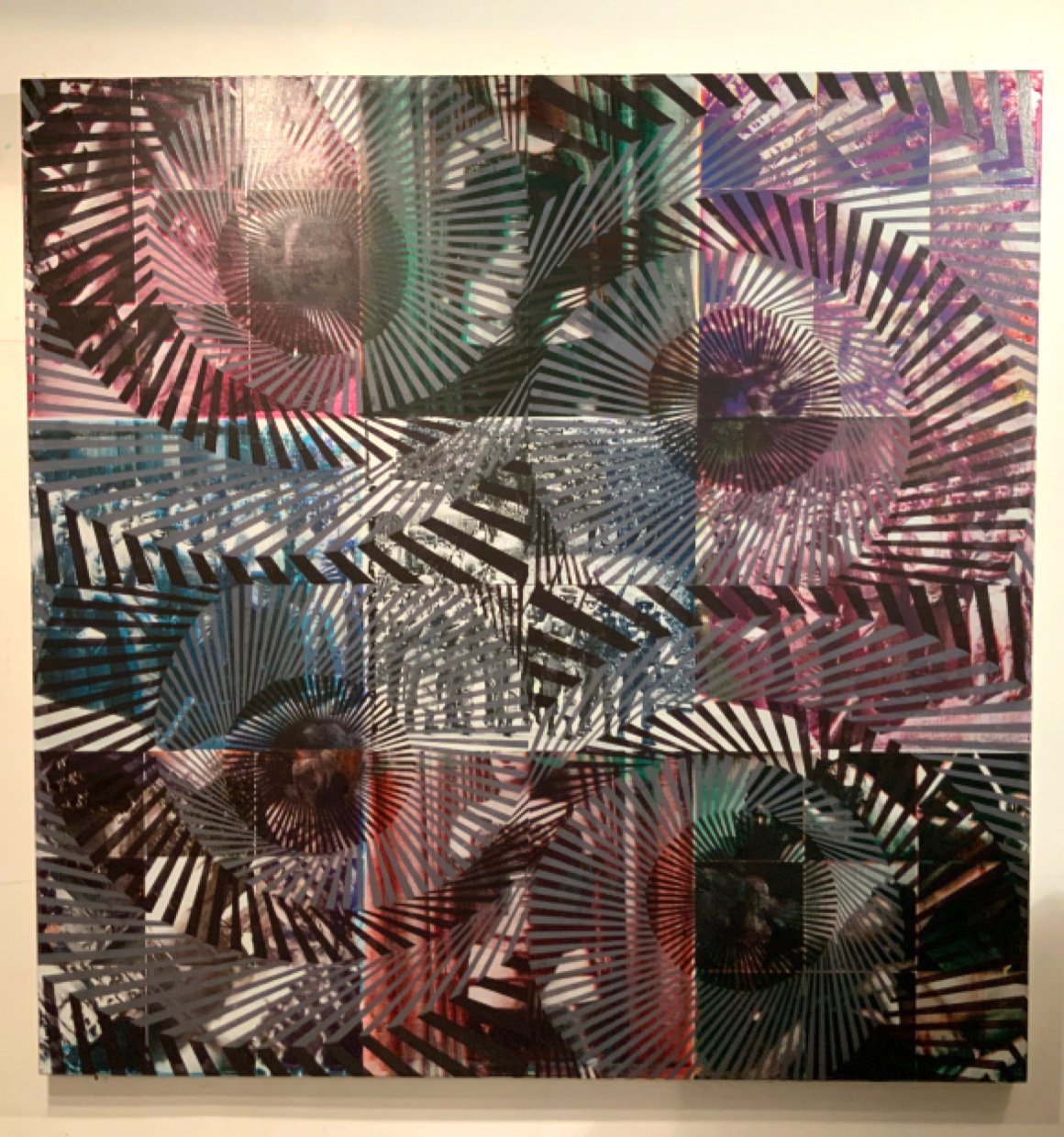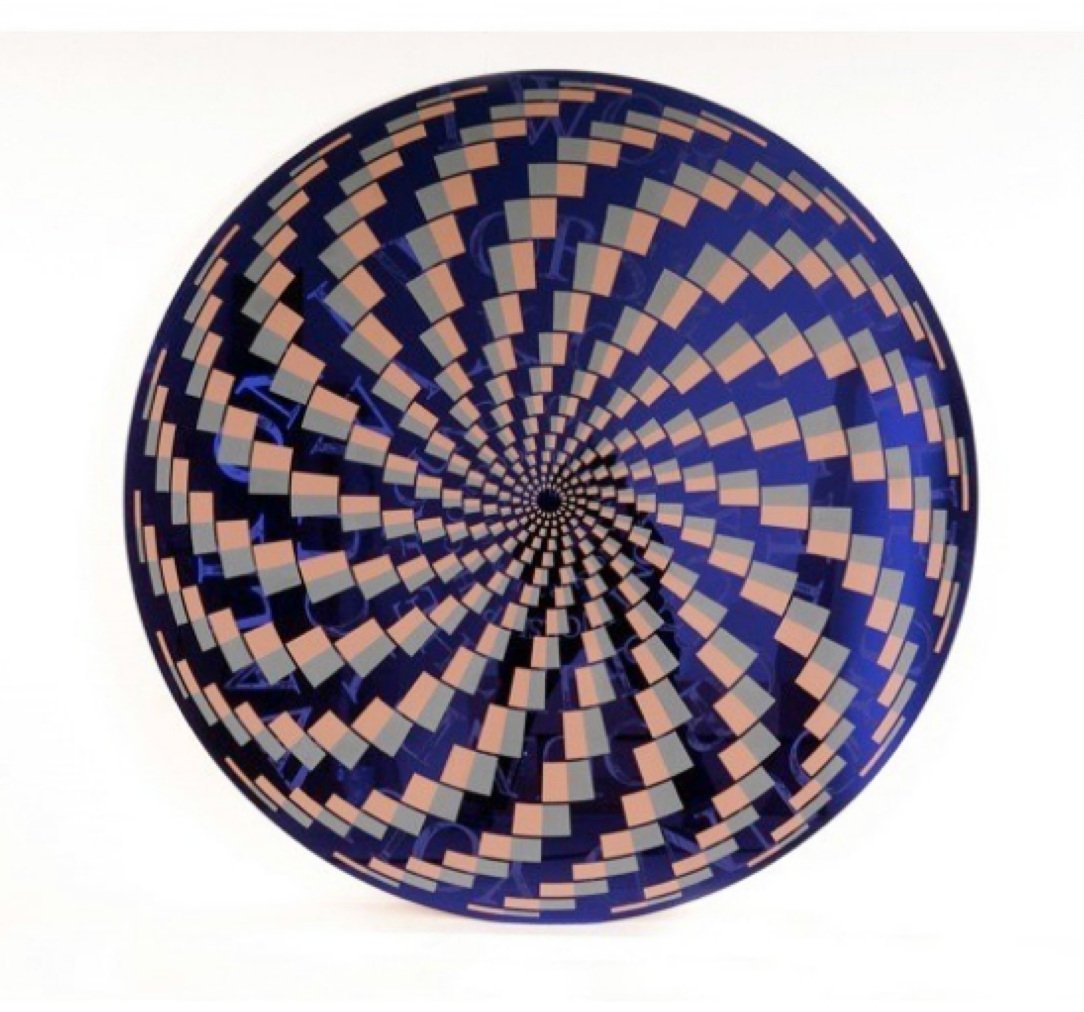Interview
Allan Switzer
Allan Switzer was born in Calgary in 1955, and his family moved to Vancouver when he was 9. He is a Vancouver multi-disciplinary artist. He has a BA in philosophy from York University, a BFA from Emily Carr University of Art and Design, and an MFA from the Concordia University.
Allan utilizes the motifs of abstraction, minimalist grids, stripes, images, and fonts.
Allan has participated in various solo and group exhibitions. His works have been published in a number of publications, the latest one being The Vancouver Sun. The article was written by Michael Scott and titled ‘Switzer Show Reminds Us of Our Own Mortality’.
What is your background and how did you start your journey in the art world?
“I was always an artist. As a child, I used scraps of cardboard to create imaginary worlds. The formalizing of my creative path began in high school, where I took photography. As a privileged child, I had an awareness of social and economic inequality. I stalked the alleyways and train tracks of what was called skid row, and photographed the beauty and squalor. I developed and printed my own photos in a darkroom I built in my basement.
I also taught myself how to paint. Over time, I approached many galleries with my portfolio. But the question of where I had study ended each interview, without them even looking at the work. I quit my job and enrolled at Emily Carr University of Art & Design, and my portfolio granted me a second year second semester status. During my second year, I was invited to participate in a well-known gallery’s invitational. Upon graduating from Emily Carr, I made it to the interview round for Yale’s MFA program, but had to decline due to lack of financial aid. Instead, I accepted a full scholarship to Concordia University’s MFA program in Montreal. At Concordia, I won the Dean’s award for graduate studies and won accolades for the quality of my work and my frenetic output.
I was a teaching assistant to a great painter, Tom Hopkins. The great Guido Molinari taught me about the power of color. My graduate work was a taxonomy or pathology of modernism and photography, where both were somehow corrupted.
My two years of studio work afforded me several important invitations to various group exhibitions in New York, Montreal, and Vancouver. My first group show in New York at the Work Space gallery included the work of Ruscha, Warhol, Ostendarp, Rosen. My work sold before the show opened. I was awarded the Dean’s award as the strongest.”
What does your work aim to say? Does it comment on any current social or political issues?
“I consider my work as both commentary on, and considerate of the history of painting. My work involves the layering of many disparate elements that individually are referential, and together create a cacophony of meaning only experienced by the viewer. My work is both intuitive and calculated.
I start off with an image in mind, and then create a system by which I realize that image. The work is about class, race, cultural sexuality, and is also autobiographical. The images and the modernism are both somehow corrupted. In a way, the work is a taxonomy or pathology of historical painting tropes.”
Which current art world trends are you following?
“I’m interested in all kinds of work. I don’t follow trends, other than making strong and powerful work. That’s the trend I follow. I love conceptual photography, painting, sculpture, and video work.”


Do you plan your work in advance, or is it improvisation?
“My work is a complicated combination of intuition and systematic execution. I work with multiple layers, and as the work progresses to completion, each revealed layer is a surprise. As a colorist, I’m intuitive.”
What process, materials, techniques, etc., do you use to create your artwork?
“I believe in the tradition of craft that has existed for centuries in painting. I build my own stretchers and stretch my own linen. I use Rabbit Skin Glue to size the linen, and apply hundreds of thin layers of gesso to build up a smooth surface. When screen printing an image, I use multiple colors that make the images both resonate and disintegrate. Then I create patterns and make stencils to alter and distort the images. I apply paint by hand with brushes or an airbrush. I think my work has depth that isn’t strictly visual.”
“My work is also about beauty. Viewers usually spend just a few seconds looking at art, so making that connection is so important.”
What does your art mean to you?
“Art is my life. It’s both the circuit breaker and energy source of life. It interprets, collaborates and influences everything, from philosophy to fashion. My work is a way of filtering the multiple worlds that collide in our daily lives.”
What is your favorite artwork and why?
“I can’t single out one piece of work amongst so many. However, to mention a few, Michelangelo’s Sistine Chapel and The Pieta, Caravaggio Rembrandt’s Night Watch, Warhol’s Twin Elvis, Philip Guston, Jeff Wall, and Constantin Brancusi.”
Have you had any noteworthy exhibitions you'd like to share?
“I’ve exhibited across Canada and the United States.
Fancy That at the Workspace Gallery, New York in 1995 was important. Reclaiming Paradise at the Bronfman Center Gallery in Montreal was also memorable, as was Salon at Monte Clark Gallery in Vancouver.
I was represented by the Monte Clark Gallery in Canada for 22 years.”
Website: www.allanswitzer.com
Instagram: @allanswitzerart




